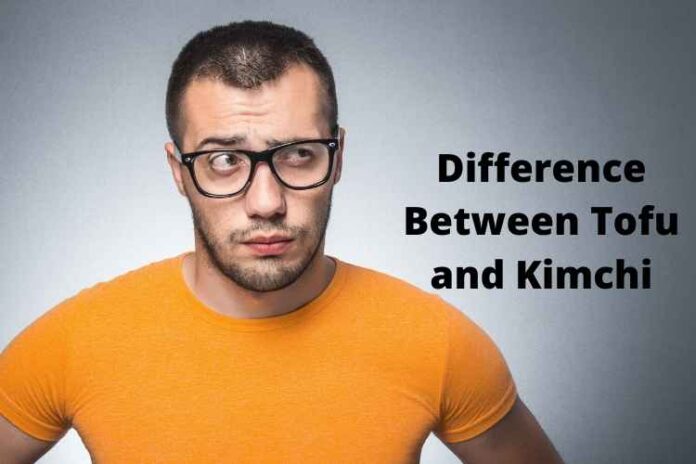In this blog we are going to tell you about Difference Between Tofu and Kimchi, so read this blog carefully to get the complete information.
Korean cuisine is well-known for its health advantages. Tofu with kimchi is a traditional delightful combination with many variants. They’re great as a main course or a snack at any time of day. These two Asian foods staple a wonderful, healthful, yet tantalizingly spicy dish. Let’s compare and contrast the two.
What is Tofu?
Tofu is a famous Asian delicacy produced from condensed soy milk curdled and pressed into firm blocks that look similar to cheese. Tofu is an Asian staple meal associated with long-standing traditions, culinary skills, and excellent health. Tofu is a luxury in many facets of Asian life and culture, not simply as a dish. Tofu may be found nearly anywhere throughout Asia and Southeast Asia, whether it’s a street food stand, a cafeteria, or a restaurant. Tofu is prepared by soaking soybeans in water, crushing them, then boiling them. Tofu comes in a variety of flavors that complement a variety of recipes. Tofu may be found practically anywhere, from wet markets and neighbourhood tofu businesses to fine dining establishments and supermarkets. In Chinese hypermarkets, little packaged tofu snacks are frequently encountered as impulsive purchases.
RELATED – BLOX.GREEN ROBUX GENERATOR: IS BLOX.GREEN ROBLOX ROBUX LEGIT?
What is Kimchi?
Kimchi is a classic Korean side dish that has exploded in popularity in the West over the last two decades due to its distinct sour flavor. Kimchi is a classic Korean food created using Lacto-fermentation, the same method used to make dill pickles and sauerkraut. The word really refers to fermented vegetables that are seasoned with sugar, salt, onions, garlic, spring onions, and other ingredients. There are several kimchi recipes to choose from, all of which are tasty ways to add extra veggies, vitamins, and enzymes to your health-conscious diet. This really tasty Korean cuisine is shockingly acidic and spicy. While cooking kimchi at home is enjoyable and easy, most Koreans prefer to purchase ready-to-eat kimchi from markets and supermarkets. Various veggies are utilized as the major components in various kimchi recipes.
Points To Remember
Iron is abundant in both kimchi and tofu.
Tofu has four times the calories as kimchi.
Tofu is higher in thiamin and pantothenic acid, whereas kimchi is higher in riboflavin, niacin, Vitamin B6, and folate.
Tofu is a wonderful protein source.
Tofu is a good calcium source.
Kimchi and tofu both have a comparable quantity of sugar: 1.1g per 100 grams for kimchi and 0.62g for tofu.
Kimchi has 433 percent more dietary fiber than tofu, with 1.6 grams of dietary fiber per 100 grams compared to 0.3 grams in tofu.
Kimchi and tofu are both low in saturated fat, with 0.07g of saturated fat per 100 grams in kimchi and 0.69g in tofu.
Final Words
Tofu is a traditional, protein-rich Korean delicacy made without heating oil, making it very light and easy to digest. Tofu is a popular Asian staple meal that is enjoyed by both the wealthy and the poor, and it is present in many facets of Asian life and culture. Kimchi is a traditional Korean meal that can be eaten as a main course or as a side dish. Kimchi is made out of fermented vegetables and a range of ingredients such as sugar, salt, onions, garlic, spring onions, and so on. They create a classic duo together.
Conclusion
I Hope this blog is sufficient enough to provide the information about Difference Between Tofu and Kimchi. Thanks for reading this blog.
RELATED – Difference Between Vegan and Pescatarian






















